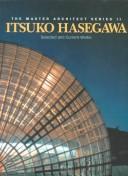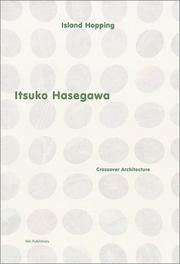| Listing 1 - 10 of 37 | << page >> |
Sort by
|
Book
ISBN: 2866301854 9782866301859 Year: 2005 Publisher: Orléans: CRDP du Centre,
Abstract | Keywords | Export | Availability | Bookmark
 Loading...
Loading...Choose an application
- Reference Manager
- EndNote
- RefWorks (Direct export to RefWorks)
Article
Abstract | Keywords | Export | Availability | Bookmark
 Loading...
Loading...Choose an application
- Reference Manager
- EndNote
- RefWorks (Direct export to RefWorks)
Article
Abstract | Keywords | Export | Availability | Bookmark
 Loading...
Loading...Choose an application
- Reference Manager
- EndNote
- RefWorks (Direct export to RefWorks)
Article
Abstract | Keywords | Export | Availability | Bookmark
 Loading...
Loading...Choose an application
- Reference Manager
- EndNote
- RefWorks (Direct export to RefWorks)

ISBN: 3764356057 9783764356057 Year: 1997 Publisher: Basel: Birkhäuser,
Abstract | Keywords | Export | Availability | Bookmark
 Loading...
Loading...Choose an application
- Reference Manager
- EndNote
- RefWorks (Direct export to RefWorks)
Itsuko Hasegawa has never viewed architecture as being a singular and isolated creative act by one individual – on the contrary, she is convinced that building should be a social event. Hence, she includes not only state-of-the-art CAD programs in each planning and design phase, but also the outcome of extensive interviews with future users of a given building. Hasegawa always allows some breathing space for the unforeseen and the unknown whenever building plans are transformed into architectural solutions for concrete activities and special functions. Her buildings – which combine clarity and playfulness and which are full of energy stemming from the interplay of material, color, transparency and form – are places which enhance and inspire people's lives.This monograph presents the 16 most significant buildings and projects in the 1990s: museums and galleries, schools, sport and recreation centers, and apartment buildings, and includes contributions by Patrice Goulet and Koji Taki. Itsuko Hasegawa is published in collaboration with the Institut Francais. d'Architecture,?Paris
Architecture --- History --- Hasegawa, Itsuko

ISBN: 1854902032 1854902024 9781854902030 Year: 1993 Publisher: London: Academy editions,
Abstract | Keywords | Export | Availability | Bookmark
 Loading...
Loading...Choose an application
- Reference Manager
- EndNote
- RefWorks (Direct export to RefWorks)
In 1964 Hasegawa graduated from the Department of Architecture, Kanto Gakuin University, the strongest formalist school in Japan. Since then she has challenged the current tendency to analyze in a formalist way. Koji's essay suggests that Hasegawa's work should be viewed in social terms. He dismisses those who see only a gaudy facade, asserting that Hasegawa's work should not be regarded simply as stimulating design Hasegawa recognizes the potential for society's transformation. Her dialogue-based programme allows for an empathetic approach to architecture. In her own essay, she cites the Shiranui Psychiatric Hospital and Stress Care Centre in Ohmuta, where she and the client discussed for three years the relationship between architecture and medical care, to ensure a holistic architectural response. This experimental therapeutic space was achieved through use of light reflected from the sea, which also registers the natural rhythm of the tides. Similarly, for the Shonandai Cultural Centre, Hasegawa involved the local residents in close communication with the design team. Through her reciprocal method of planning, she provides a flexible type of architecture which accepts a diversity of individuals
Architecture --- History --- Hasegawa, Itsuko --- Architecture, Modern --- Hasegawa, Itsuko. --- 長谷川逸子 --- Ville --- Urbanisme --- Dessin --- Dessin d'architecture

ISBN: 1875498559 9781875498550 Year: 1997 Publisher: Victoria: Images,
Abstract | Keywords | Export | Availability | Bookmark
 Loading...
Loading...Choose an application
- Reference Manager
- EndNote
- RefWorks (Direct export to RefWorks)
architects --- Architecture --- Hasegawa, Itsuko --- Japan --- Architecte --- Architecture contemporaine
Book
Abstract | Keywords | Export | Availability | Bookmark
 Loading...
Loading...Choose an application
- Reference Manager
- EndNote
- RefWorks (Direct export to RefWorks)
Bil, Lars --- Hasegawa, Itsuko --- Holl, Steven --- Tange, Kenzo --- Japan

ISBN: 9056621866 Year: 2000 Publisher: Rotterdam : NAi,
Abstract | Keywords | Export | Availability | Bookmark
 Loading...
Loading...Choose an application
- Reference Manager
- EndNote
- RefWorks (Direct export to RefWorks)
Hasegawa, Itsuko --- Architecture --- History --- Hasegawa, Itsuko, --- Architecture, Western (Western countries) --- Building design --- Buildings --- Construction --- Western architecture (Western countries) --- Art --- Building --- Design and construction --- 長谷川逸子 --- Japan --- Architecture, Primitive
Book
ISBN: 0688157122 Year: 1997 Publisher: New York, N.Y. Arco
Abstract | Keywords | Export | Availability | Bookmark
 Loading...
Loading...Choose an application
- Reference Manager
- EndNote
- RefWorks (Direct export to RefWorks)
Building materials. Building technology --- Architecture --- architectural glass --- glasconstructies --- Foster, Norman --- Nouvel, Jean --- Hasegawa, Itsuko --- Egeraat, van, Erick --- Perrault, Dominique --- Ito, Toyo --- Berkel, van, Ben --- Velsen, van, Koen --- Sejima, Kazuyo --- Herzog & de Meuron [Basel] --- Mecanoo Architects [Delft]
| Listing 1 - 10 of 37 | << page >> |
Sort by
|

 Search
Search Feedback
Feedback About UniCat
About UniCat  Help
Help News
News